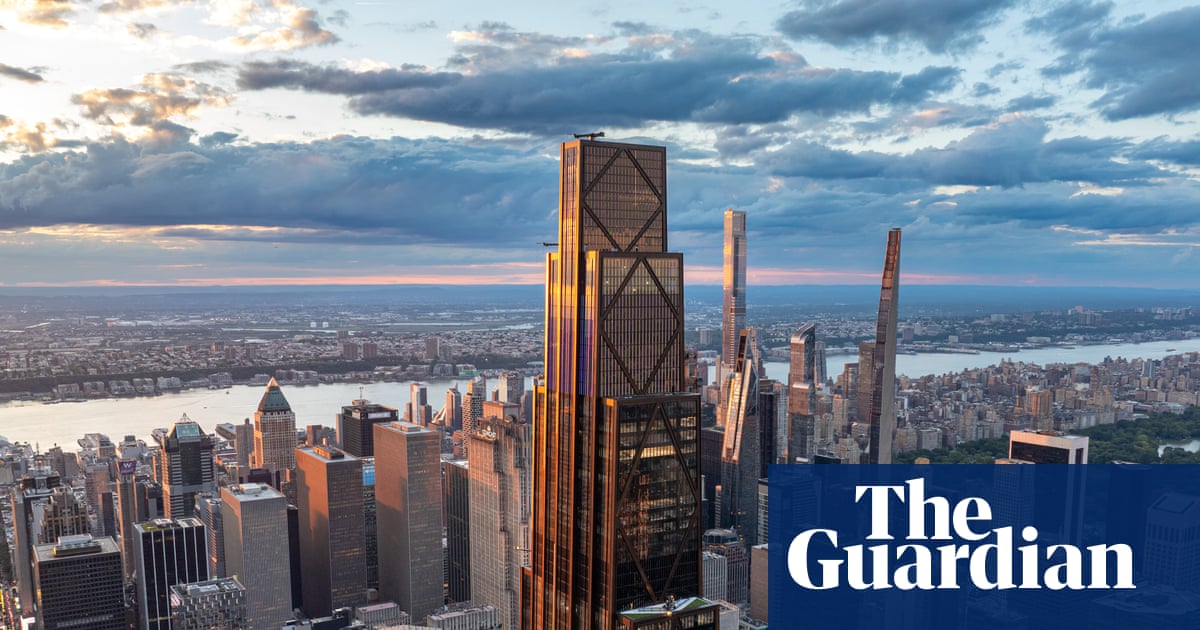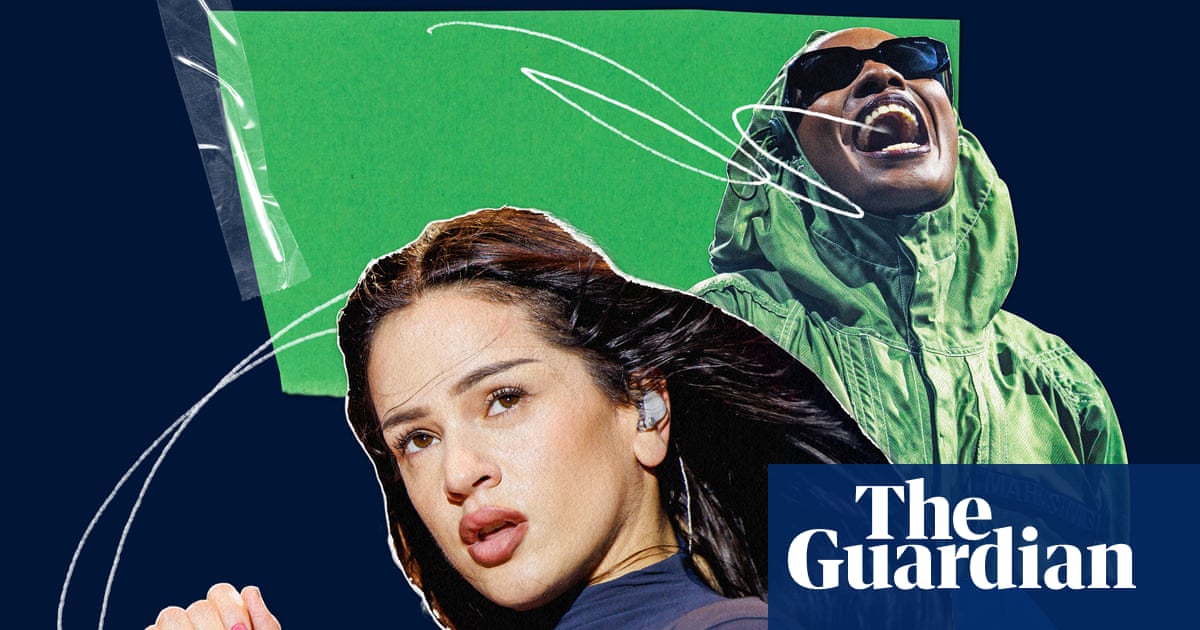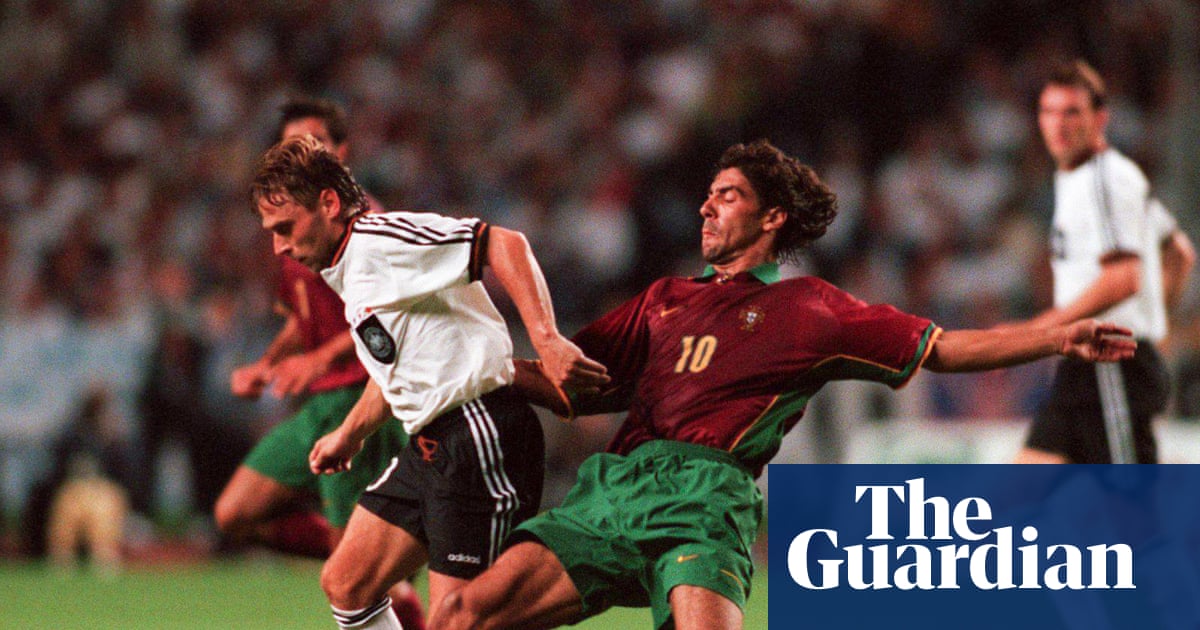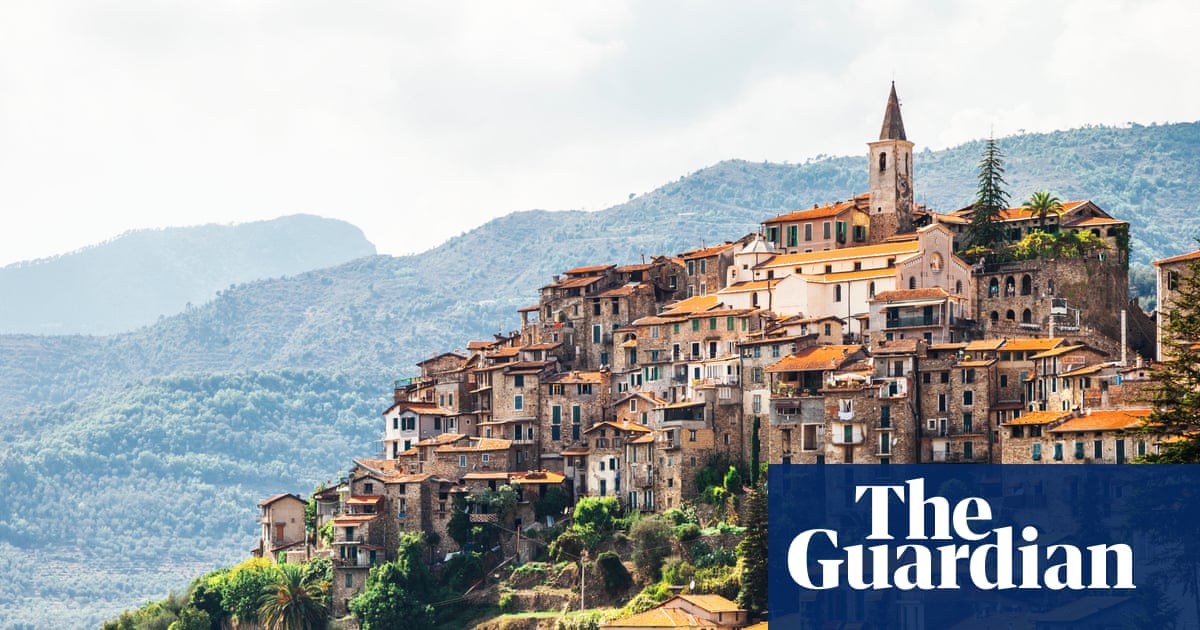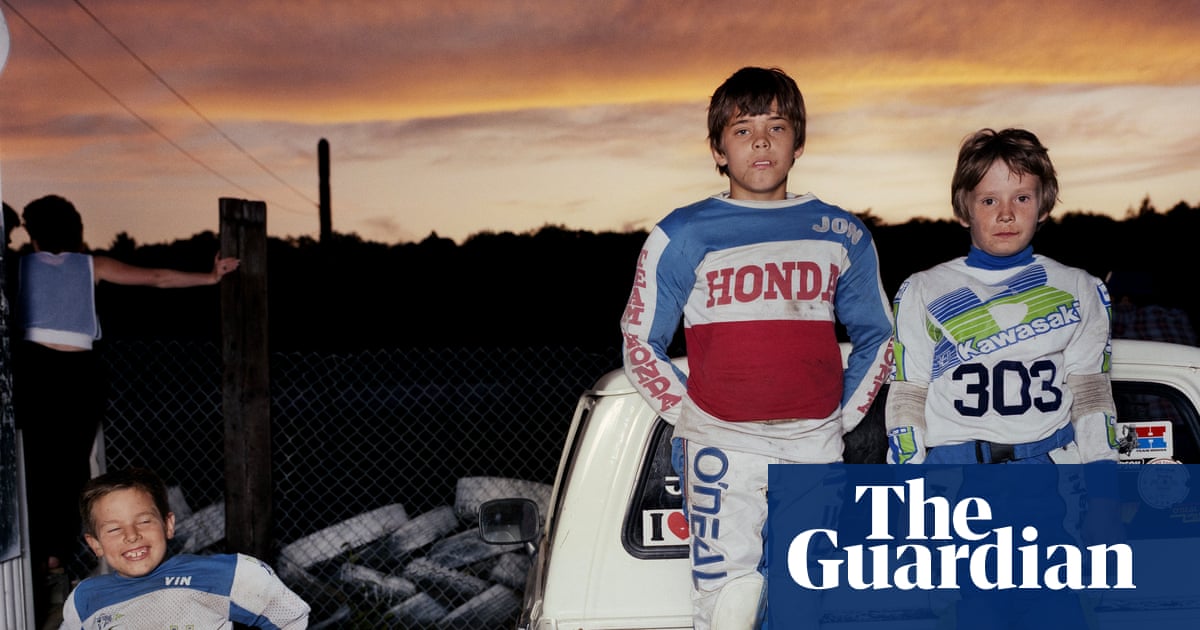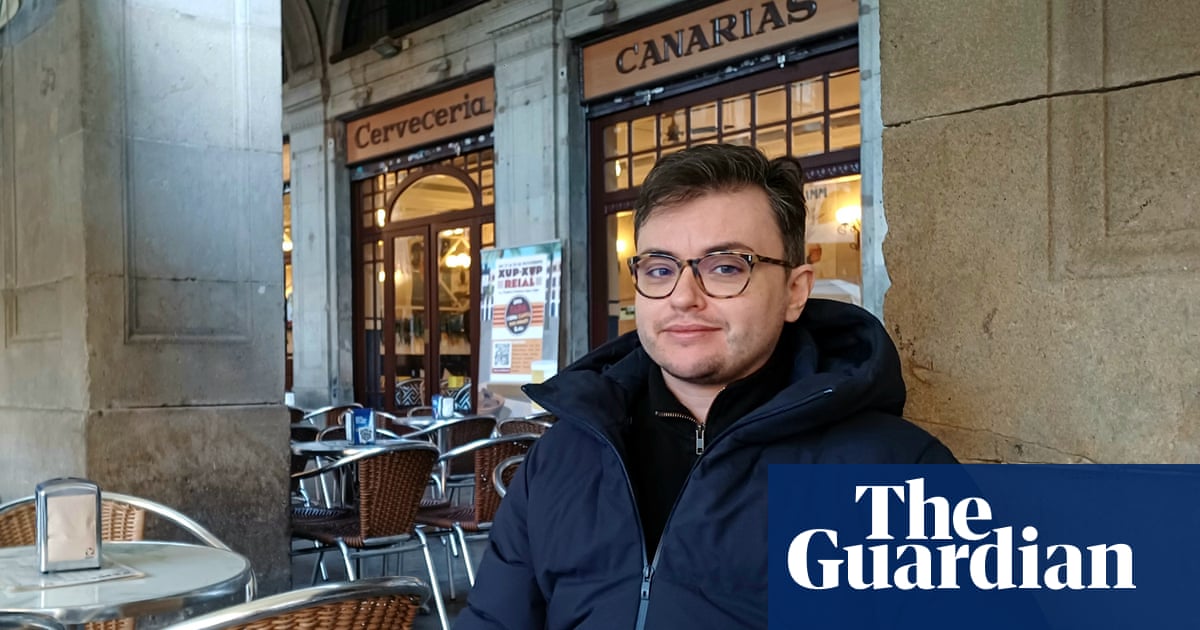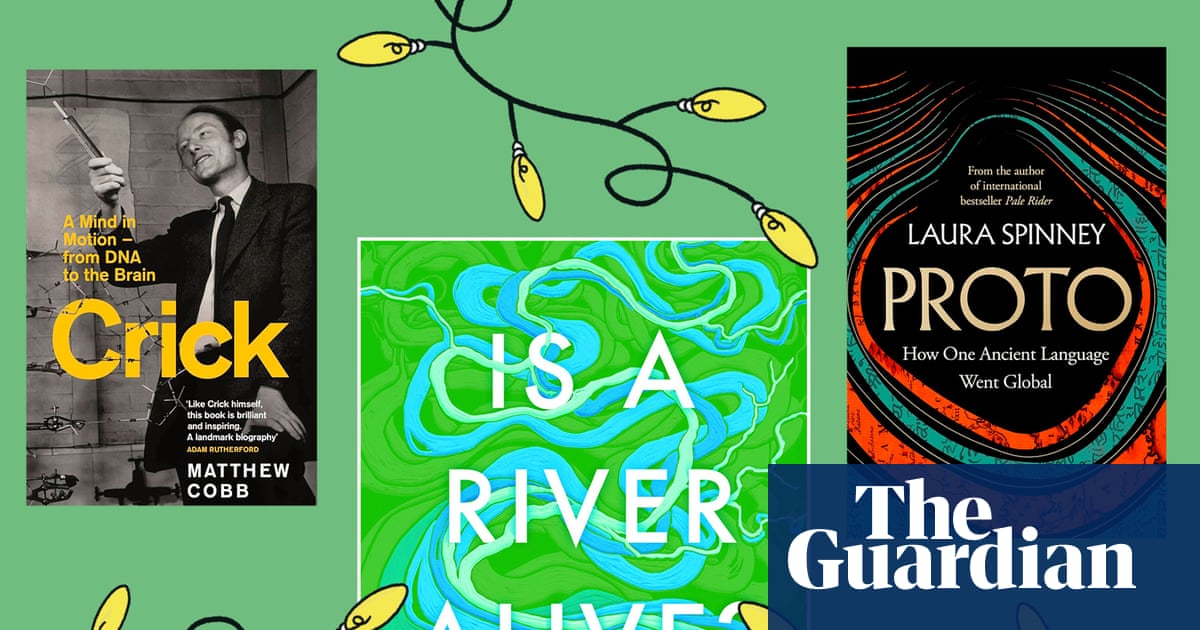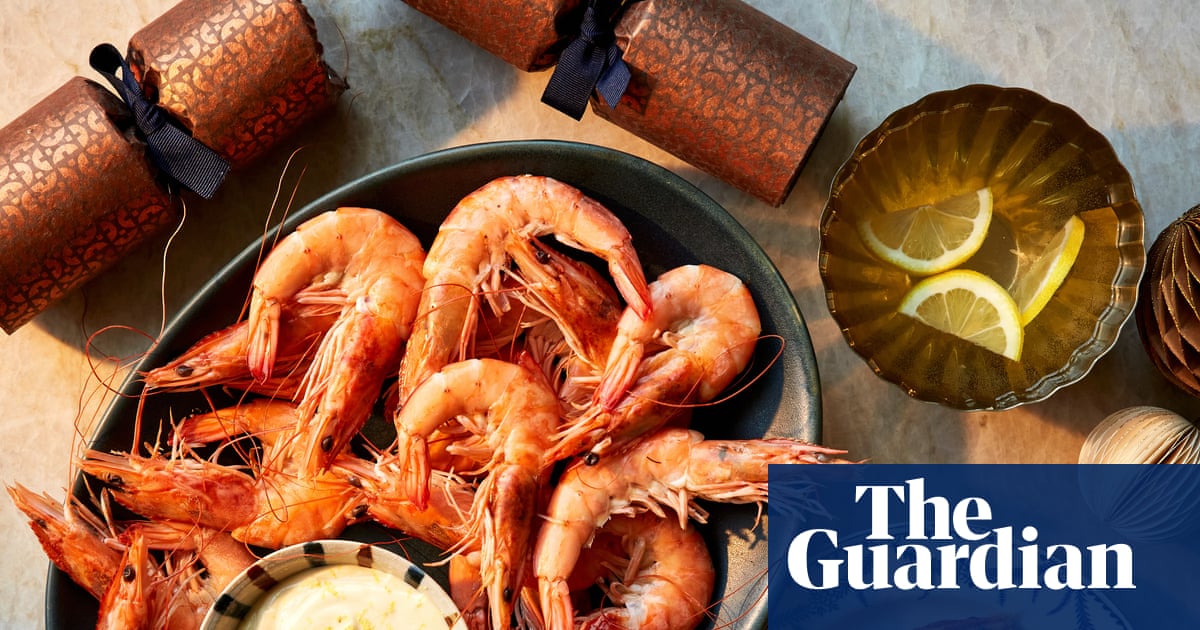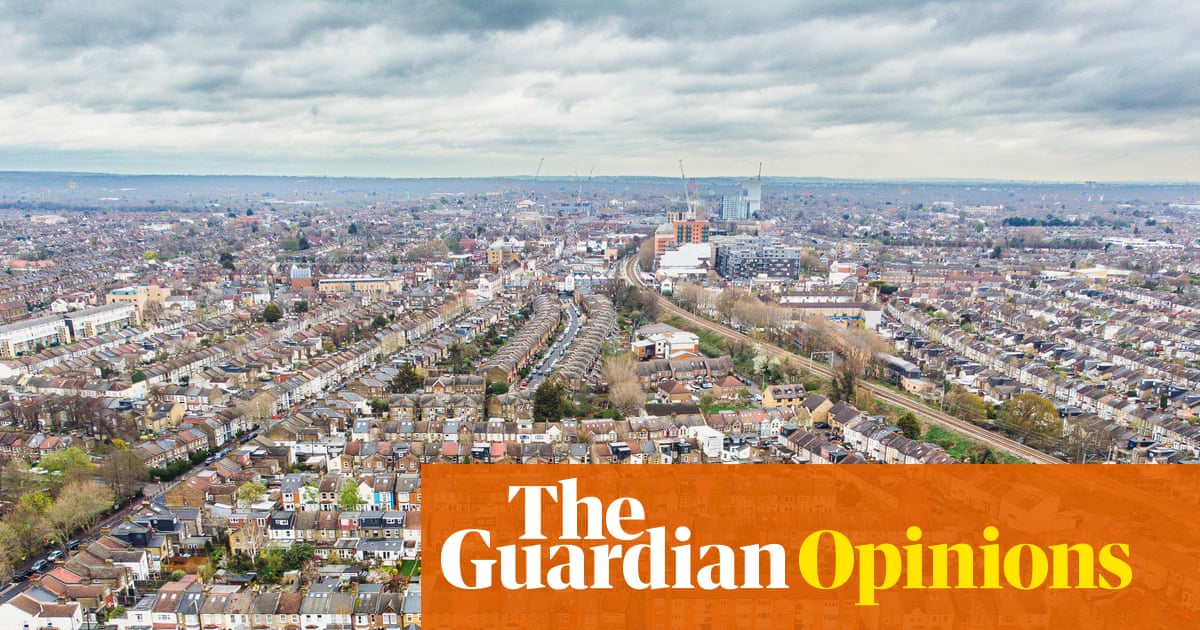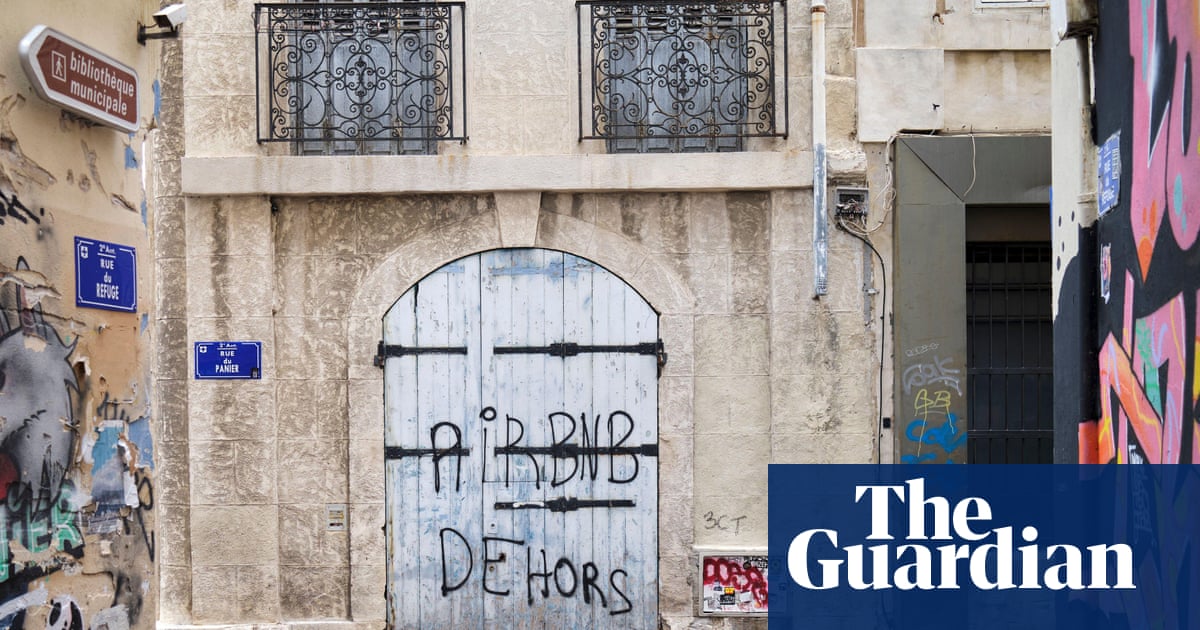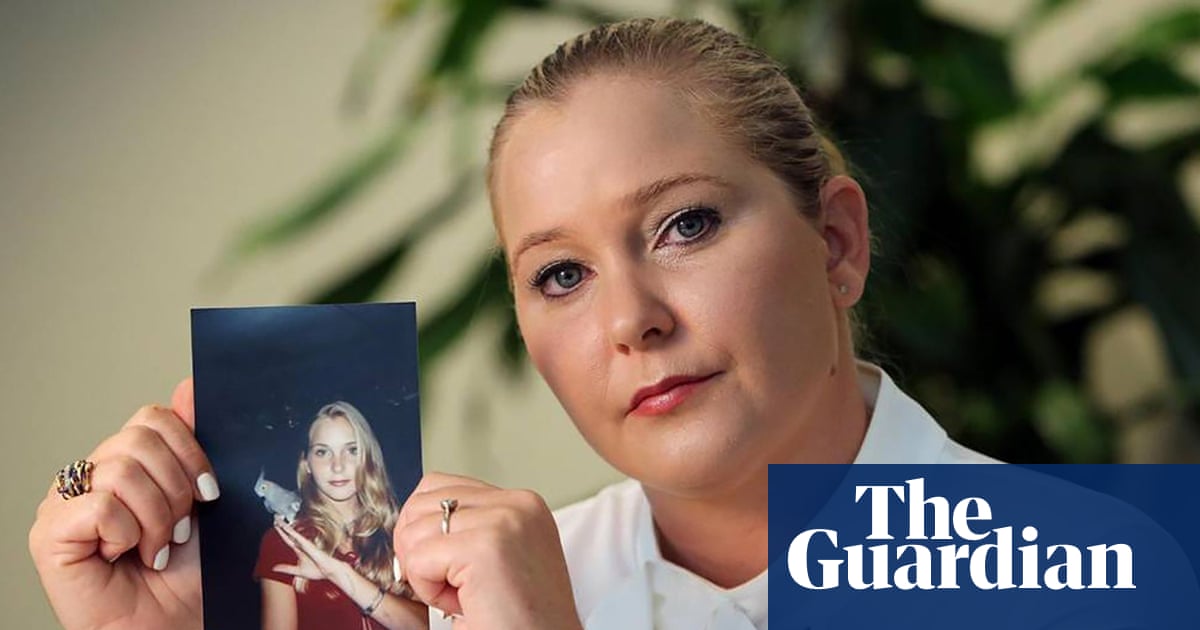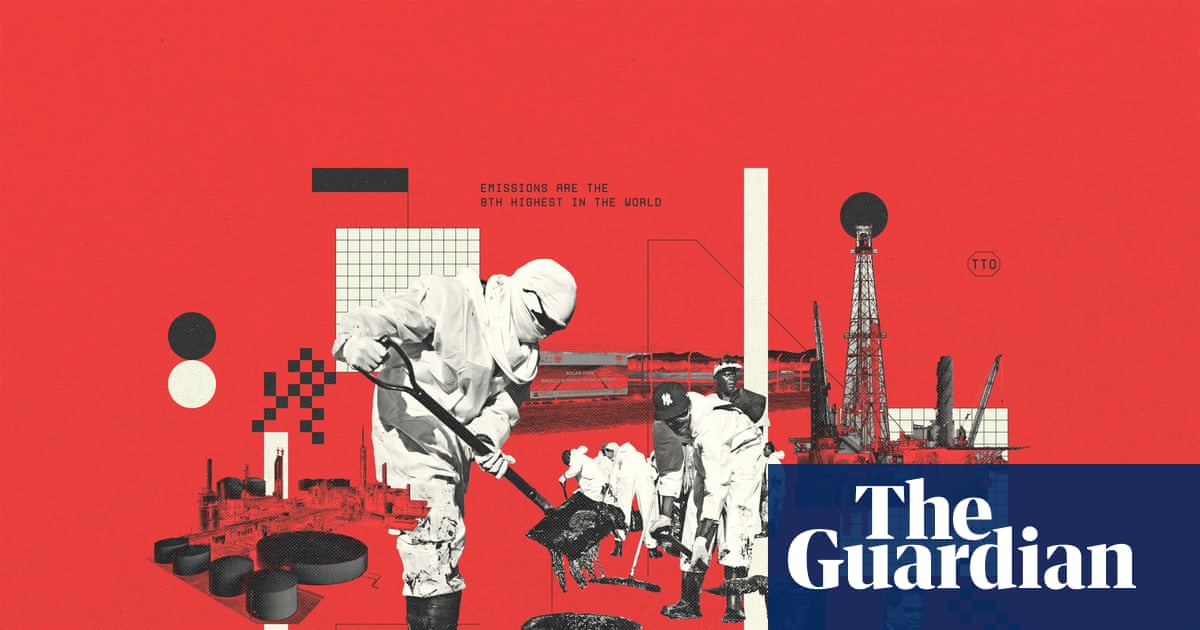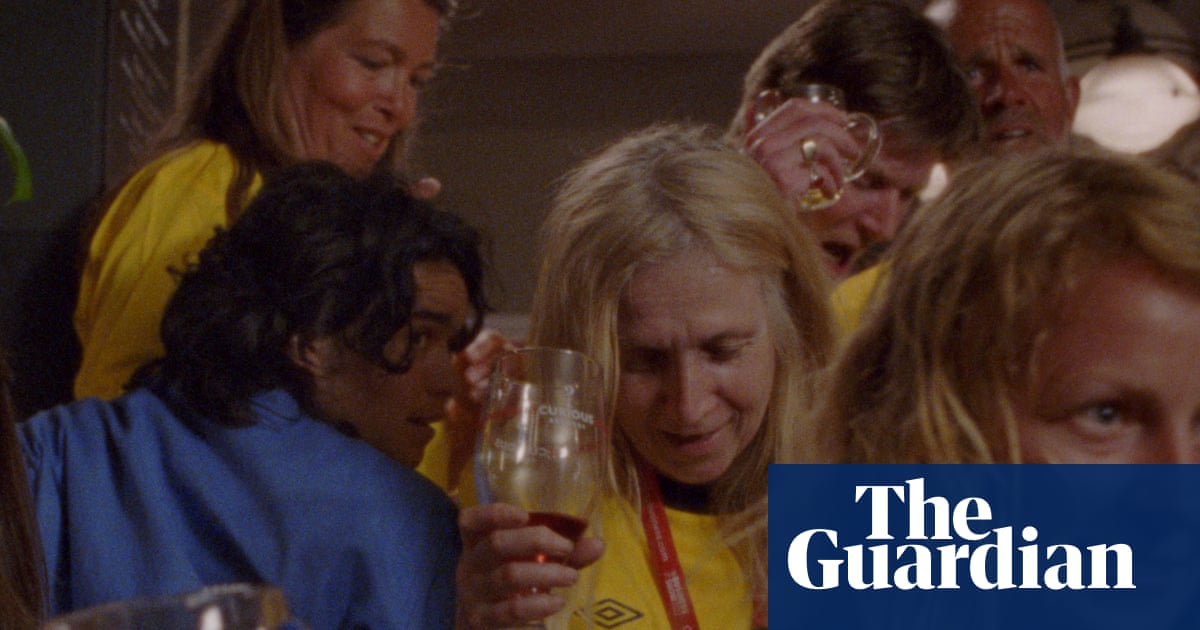The winner of the Rising Star award
An inquisitive harbour seal enjoying the patter of the rain on the archipelago of Heligoland, Germany. Lorenz’s portfolio aims to show people his personal view of nature and inspire others to protect it
Photograph: Luca Lorenz/Wildlife Photographer of the Year/PA
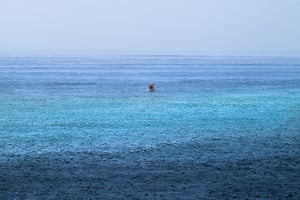
The winner of the Plants and Fungi category
The fluorescent world of an insect-attracting pitcher plant taken in Kuching, Sarawak, Borneo, Malaysia. Some carnivorous pitcher plants reflect UV light on certain areas as part of their ‘display’. They use colour, scent and nectar to lure their prey into pools of digestive juices at the bottom of their leaves
Photograph: Chien Lee/Wildlife Photographer of the Year/PA
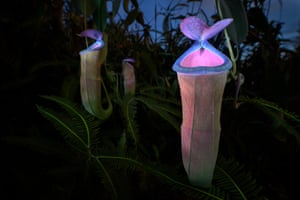
The winner of the Behaviour: Invertebrates category
A gum-leaf skeletoniser caterpillar taken in Torndirrup national park, Western Australia. This caterpillar’s unusual headgear is made up of old head capsules, each retained with every moult. The resulting tower is believed to help deflect attacks by predators
Photograph: Georgina Steytler/Wildlife Photographer of the Year/PA
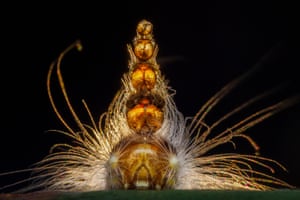
The winner of the Wetlands: The Bigger Picture category
A springtail among a galaxy of neon green gas bubbles in moorlands in Platzertal, Tyrol. Austria has lost 90% of its peat bogs, and only 10% of those that remain are in good condition. Platzertal is one of the last intact high moorlands in the Austrian Alps, and an area renowned for its carbon-storing peat bogs
Photograph: Sebastian Frolich/Wildlife Photographer of the Year/PA
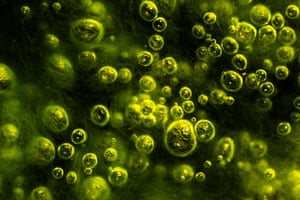
The winner of the Photojournalism category
Groundbreaking science attempts to save the northern white rhino from extinction through in vitro fertilisation (IVF), in Ol Pejeta, Nanyuki, Kenya. This southern white rhino foetus, which did not survive due to an infection, was the result of the first successful rhino embryo transfer into a surrogate mother through IVF. This breakthrough paves the way for saving the rare northern white rhino from extinction, as scientists can take the next crucial steps towards transferring the first northern white rhino embryo into a southern white rhino surrogate
Photograph: Jon A Juarez/Wildlife Photographer of the Year/PA

The winner of the Oceans: The Bigger Picture category
An Atlantic fishing vessel during a polar night in northern Norway. Through his work, Audun aims to draw attention to the ongoing conflict between seabirds and the fishing industry. Many birds drown in or around these purse seine nets each year. Various fisheries and researchers are trialling solutions, including sinking the nets more quickly to make them less accessible to the birds
Photograph: Audun Rikardsen/Wildlife Photographer of the Year/PA
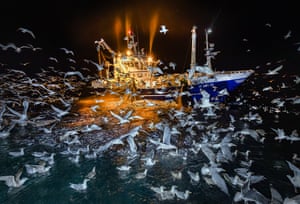
The winner of the Portfolio award
Eye of the Tundra. Kharitonov’s artistic exploration of remote regions in the Russian North, Siberia and Asia highlights taiga and Arctic tundra scenes as summer rapidly turns to winter. Using drones, he picks out details in these vast terrains, showcasing their wild beauty
Photograph: Alexey Kharitonov/Wildlife Photographer of the Year/PA
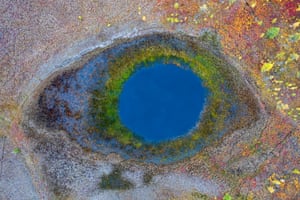
Highly commended in the Photojournalism category, and the Impact award winner
An orphaned giant anteater pup follows its caregiver after an evening feed at a rehabilitation centre in Belo Horizonte, Brazil. Faciole wanted to highlight the consequences of road collisions, a leading cause of the decline in giant anteater numbers in Brazil. This pup’s mother was killed by a vehicle, and the hope is that it will be released back into the wild after being encouraged to develop crucial survival skills by its caregiver
Photograph: Fernando Faciole/Wildlife Photographer of the Year/PA
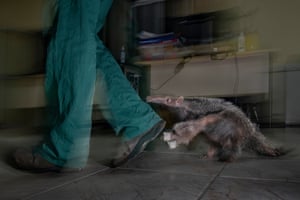
The winner of the Underwater category
The egg case of a swell shark, tethered to the base of a giant kelp in Monterey Bay, California. Researchers estimate that kelp forests in Monterey Bay have declined by more than 95% over the past 34 years. Swell sharks depend on kelp to lay their eggs, making them especially vulnerable to such losses
Photograph: Ralph Pace/Wildlife Photographer of the Year/PA
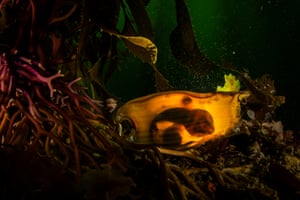
The winner of the Behaviour: Mammals category
A caracal hunting a lesser flamingo at Ndutu Lake, Serengeti national park, Tanzania. Caracals have a varied diet, from insects to antelope, and are renowned for the acrobatic leaps they make to snatch birds from the air. But there are few, if any, records of them hunting flamingos
Photograph: Dennis Stogsdill/Wildlife Photographer of the Year/PA
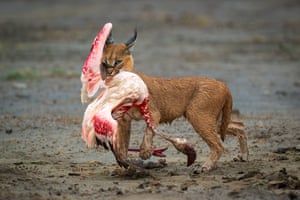
The winner of the Animals in their Environment category
A peppered moray eel hunting for carrion at low tide in D’Arros Island, Amirante, Seychelles. Peppered moray eels are well adapted to the intertidal zone. They can hunt both above and below the water’s surface using their keen senses of smell and sight, sometimes staying out of water for more than 30 seconds
Photograph: Shane Gross/Wildlife Photographer of the Year/PA
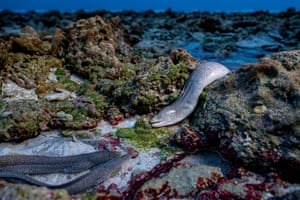
The winner of the Urban Wildlife category, and an overall winner, 2025
A brown hyena among the skeletal remains of a long-abandoned diamond mining town in Kolmanskop, near Luderitz, Namibia. The rarest hyena species in the world, brown hyenas are nocturnal and mostly solitary. They are known to pass through Kolmanskop on their way to hunt Cape fur seal pups or scavenge for carrion washed ashore along the coast
Photograph: Wim van den Heever/Wildlife Photographer of the Year/PA
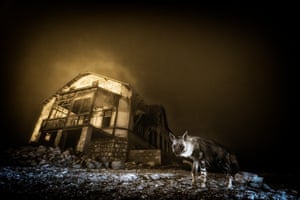
The winner of the Behaviour: Birds category
A ladyfish snatching its prey from right under an egret’s beak in Yundang Lake, Fujian province, China. Once a natural marine harbour, Yundang Lake was sealed off from the sea during development in the 1970s. Isolated from the tides and currents, it became polluted and stagnant. An engineering project later reconnected it to the sea via a system of gates that regulate water flow
Photograph: Qingrong Yang/Wildlife Photographer of the Year/PA
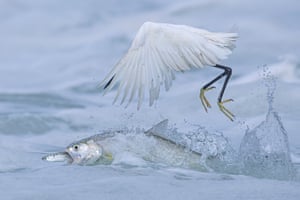
The winner of the Photojournalist Story Award category
A black-tailed rattlesnake outside Fort Davis, Texas, US. For centuries, rattlesnakes have been viewed in vastly different ways across the American continent – from reverence and respect to fear and suspicion. Annual rattlesnake round-ups, where hunters compete to collect the most snakes, began in the 1930s. Today, these competitions are losing their appeal, but in some states, anti-rattlesnake sentiment remains strong. In this portfolio, Gonzalez de Rueda calls for protection for these creatures before they disappear from the landscape
Photograph: Javier Aznar Gonzalez de Rueda/Wildlife Photographer of the Year/PA
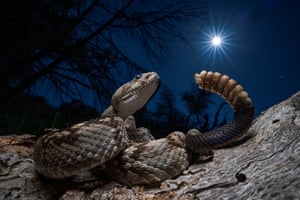
The winner of the 15-17 Years category
A longhorn beetle in the Lepini mountains, Lazio, Italy. The photograph tells a poignant story of habitat loss. As longhorn beetles tunnel into dead wood, fungi make their way inside, helping to break it down and recycle nutrients. If the beetles’ habitat is disturbed or destroyed, the effects ripple across the entire ecosystem
Photograph: Andrea Dominizi/Wildlife Photographer of the Year/PA
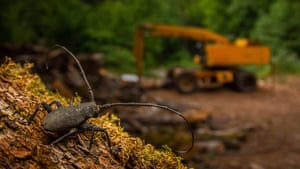
The winner of the Behaviour: Amphibians and Reptiles category
A gathering of lesser tree frogs in a breeding event on Kaw Mountain, French Guiana. To attract mates, lesser tree frogs produce short, shrill calls. Huge numbers gather, and the spectacular breeding event – triggered by heavy rains – lasts for just a few hours
Photograph: Quentin Martinez/Wildlife Photographer of the Year/PA
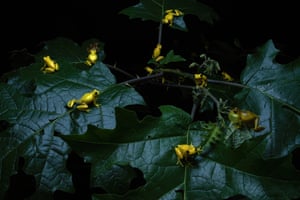
The winner of the Natural Artistry category
An orb weaver spider on its web on a pedestrian bridge, silhouetted by lights from the cars below, taken in Ibbenburen, Germany. In urban environments, orb weaver spiders often spin webs near artificial lights that attract insects at night
Photograph: Simone Baumeister/Wildlife Photographer of the Year/PA
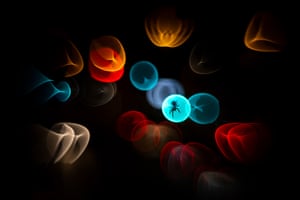
The winner of the 10 Years and Under category
An orb weaver spider inside its silken retreat on a cold September morning in Wales. The web is constructed from a scaffold of radial threads, overlaid with a spiral of sticky silk to hold ensnared insects. A strong signal thread transmits vibrations to the spider’s hiding place, triggering it to emerge and collect its prey
Photograph: Jamie Smart/Wildlife Photographer of the Year/PA
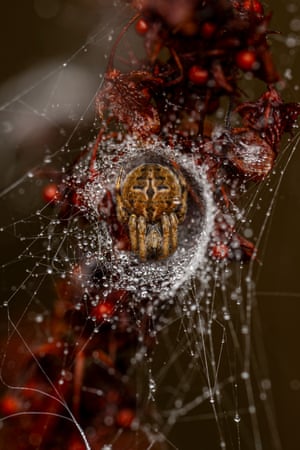
The winner of the Animal Portraits category
The orange glint of an eagle owl’s eyes in Naturns, South Tyrol, Italy. About twice the weight of a buzzard and with a wingspan approaching 180cm (6ft), these formidable nocturnal predators are among the largest owls. They nest on sheltered cliff ledges or in crevices, often returning to the same site for years
Photograph: Philipp Egger/Wildlife Photographer of the Year/PA
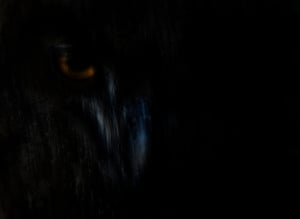
The winner of the 11-14 Years category
Mist-shrouded mountains with a silhouetted Alpine ibex, taken in Col de la Colombière, Haute-Savoie, France. Native to Europe, the species was hunted close to extinction in the early 1800s. Thanks to protection and reintroduction efforts, ibex now roam large areas of the Alps. However, a rapidly changing climate causing shifts in food availability may hinder their survival
Photograph: Lubin Godin/Wildlife Photographer of the Year/PA
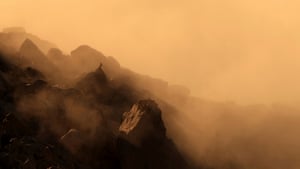

.png) 1 month ago
45
1 month ago
45

